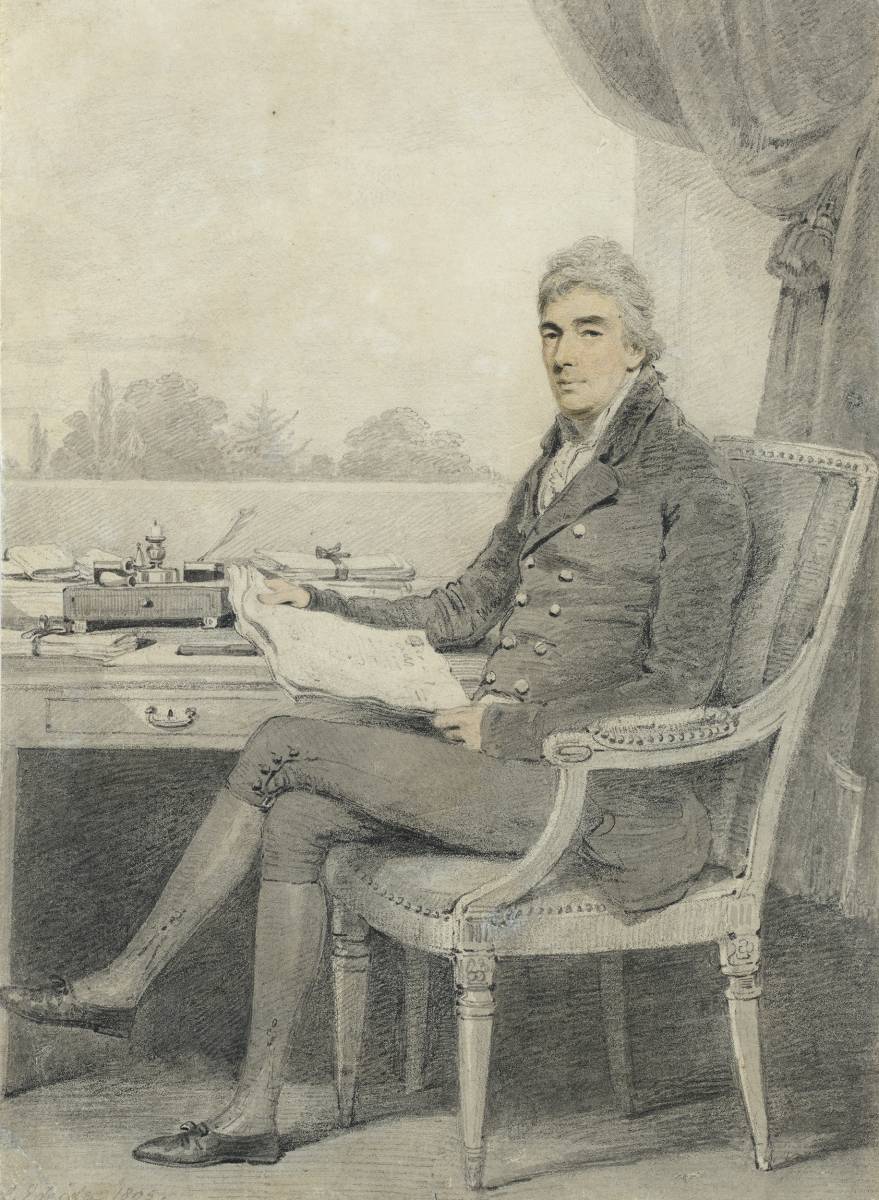This elegant group of six portraits was made by Henry Edridge at the height of his career. Born in Paddington, Edridge was apprenticed to the mezzotint engraver William Pether at the age of fifteen and entered the Royal Academy Schools in 1784 where he was awarded a silver medal two years later. Sir Joshua Reynolds admired his work and allowed him to make miniature copies of his own paintings. Edridge exhibited his work, principally portrait drawings, at the Academy from 1786 until his death and was elected an associate academician in 1820. Edridge had been keen to be elected an academician, but as a watercolourist he was blocked by Sir Thomas Lawrence and John Hoppner; the latter was noted by Joseph Farington on 17 June 1808 as saying that if Edridge were to be elected, ‘a Herd of Water Colour painters wd have a right to offer themselves [for election].’
From the 1790s Edrdige moved away from miniature painting developing a new type of full-length portraiture executed in pencil with touches of grey wash, the figures shown seated or standing, with a landscape view beyond. Richard Cosway had introduced this type of portrait and exhibited them at the Royal Academy in the 1780s but, as Patrick Noon has noted, Edridge’s technique owed little to Cosway’s and more to the drawing style associated with the Munro school of landscape artists.
As with Gardner and Hamilton before him, Edridge’s small-format, full-length portraits appealed to a fashionable and aristocratic clientele. Edridge regularly made suites of portraits, depicting entire families; as is the case with this group. The six drawings each signed and dated either 1805 or 1806 showing six children and portraits of their parents set variously in interiors and landscapes. The eldest child, a young man in academical dress, is posed in front of the distinctive backdrop of Christ Church, Oxford, where he seems likely to be an undergraduate. The younger children are variously shown in landscape settings, one son with a large kite and another with two of his sisters and posed with a dog. The parents, by contrast, are shown in interiors, father at a desk and mother with needlework before her. It has been suggested that the portraits might show members of the Peel family. The young Robert Peel, the future Prime Minster, was an undergraduate of 17 at Christ Church in 1805, his next youngest brother, William would have been 16 and could be the young man seated in a landscape; their next brother, John, was 7 and could be identified as the boy with the kite, their two sisters Eleanor and Anne would have been 11 and 9 and Jonathan Peel six. The only detraction is that Sir Robert Peel’s first wife, Ellen Yates, the mother to his eleven children, died in 1803. However, Peel married again in 1805, Susannah Clerke and it maybe she who is shown in mob cap seated with her sewing. With the correspondence of ages – and facial features – it seems a distinct possibility that these six portraits do depict members of the Peel family, but without corroborating evidence the identification must remain only a suggestion.


